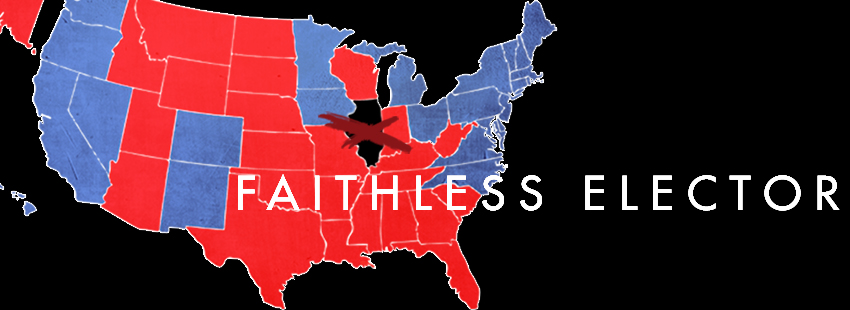

| Faithless Elector, by James McCrone is a timely, compelling novel for our turbulent times. | Available now, at Amazon.com |
There have been four (4)
instances of Faithless Electors in US History:
|
 James McCrone |
| Electoral
College Vote and the Popular Vote |
|
|
|
|
|
|
|
|
|
|
|
| Reforming
the Electoral College |
|
| The
closest Congress has come to amending the Electoral College since 1804
was during the 91st Congress (1969–1971). H.J. Res. 681 (1969) proposed
the
direct election of a President and Vice President, requiring a run
off
when no candidate received more than 40 percent of the vote. The
resolution passed the House in 1969 by a vote 338-70, but failed to
pass the Senate. ["House
Votes for Direct Election of President." In CQ Almanac 1969, 25th ed.,
895-901. Washington, DC: Congressional Quarterly, 1970.] |
For an even more in-depth discussion of issues pertaining to the Electoral College, click HERE |
| The National Popular
Vote Bill (website) notes that "The
shortcomings of the current system of electing the President stem from
state winner-take-all statutes (i.e., state laws that award all of a
state’s electoral votes to the candidate receiving the most popular
votes in each separate state). "Because of these state winner-take-all statutes, presidential candidates have no reason to pay attention to the issues of concern to voters in states where the statewide outcome is a foregone conclusion. Two-thirds of the 2012 general-election campaign events (176 of 253) were in just 4 states (Ohio, Florida, Virginia, and Iowa). Thirty-eight states were ignored." MORE |
|
| Source(s): |
http://history.house.gov/Institution/Electoral-College/Electoral-College/ |